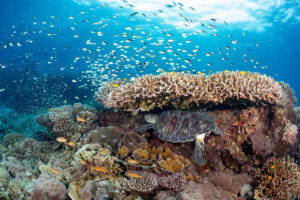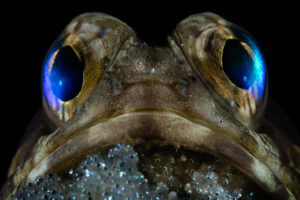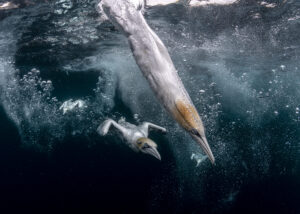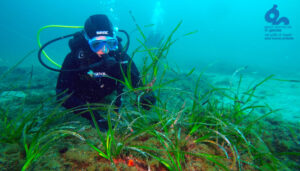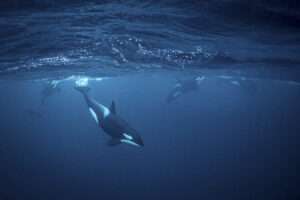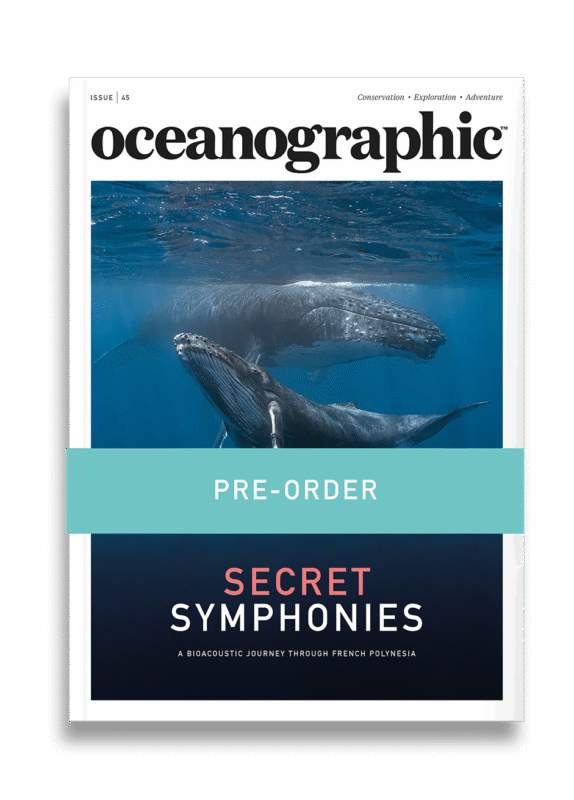When the ocean heals: the timelessness of mobula rays
In the waters of Baja California Sur, ocean safari guide Victoria Alvarez often experiences a weightlessness of freediving... but nothing quite matches the timelessness of floating above a grouping of Mobula munkiana - an experience both humbling and awe-inspiring.
Swimming with thousands of mobulas in Baja California Sur has become a must on every diver’s wishlist worldwide. Ironically, it involves an activity often underestimated by many of us: snorkelling.
As divers (more used to measuring ourselves in units of ‘metres of depth’ and ‘minutes of decompression’) we often catch ourselves longing to once again float on the ocean’s surface – like we did as children – surrounded by thousands of these creatures swimming below us.
As we fantasise, we wonder what these mobula are doing in their droves. Perhaps they are feeding, mating, or simply socialising? In the end, it doesn’t really matter what they are doing. We just want to be there for the very same reasons we first dipped our heads into the sea: because it makes us feel a part of it.
The Mobula munkiana has been studied for many years by many scientists and expert minds. The smallest of its kind, it is also the most social. Yet, surrounding this species are as many mysteries as there are individuals that make up their migrating groups. We’re talking thousands.
Why do mobulas leap out of the water? Why do they make sounds similar to the popping of popcorn when they crash back down onto the sea’s surface? Are they playing? Are they reproducing? Are they already, in fact, pregnant?
In my experience as a guide on numerous mobula safaris – all of these questions I have been asked daily. My response is often the same, words belonging not to me but to my colleague – the eminent marine biologist, Dr Marta Palacios: ““We don’t know.”
It’s not out of ambivalence to the curiosity of those that I have joined in the ocean to experience these enigmatic creatures that I chose those words. It’s simply, challenging to scientifically explain many of the behaviours that we guides and researchers frequently observe. That’s not to say we don’t form our own theories – imagined reasons we apply to these gentle ocean dwellers. But the truth is, many of the questions we get asked can only be answered by asking the mobulas themselves.
And that’s what makes them so fascinating to us.
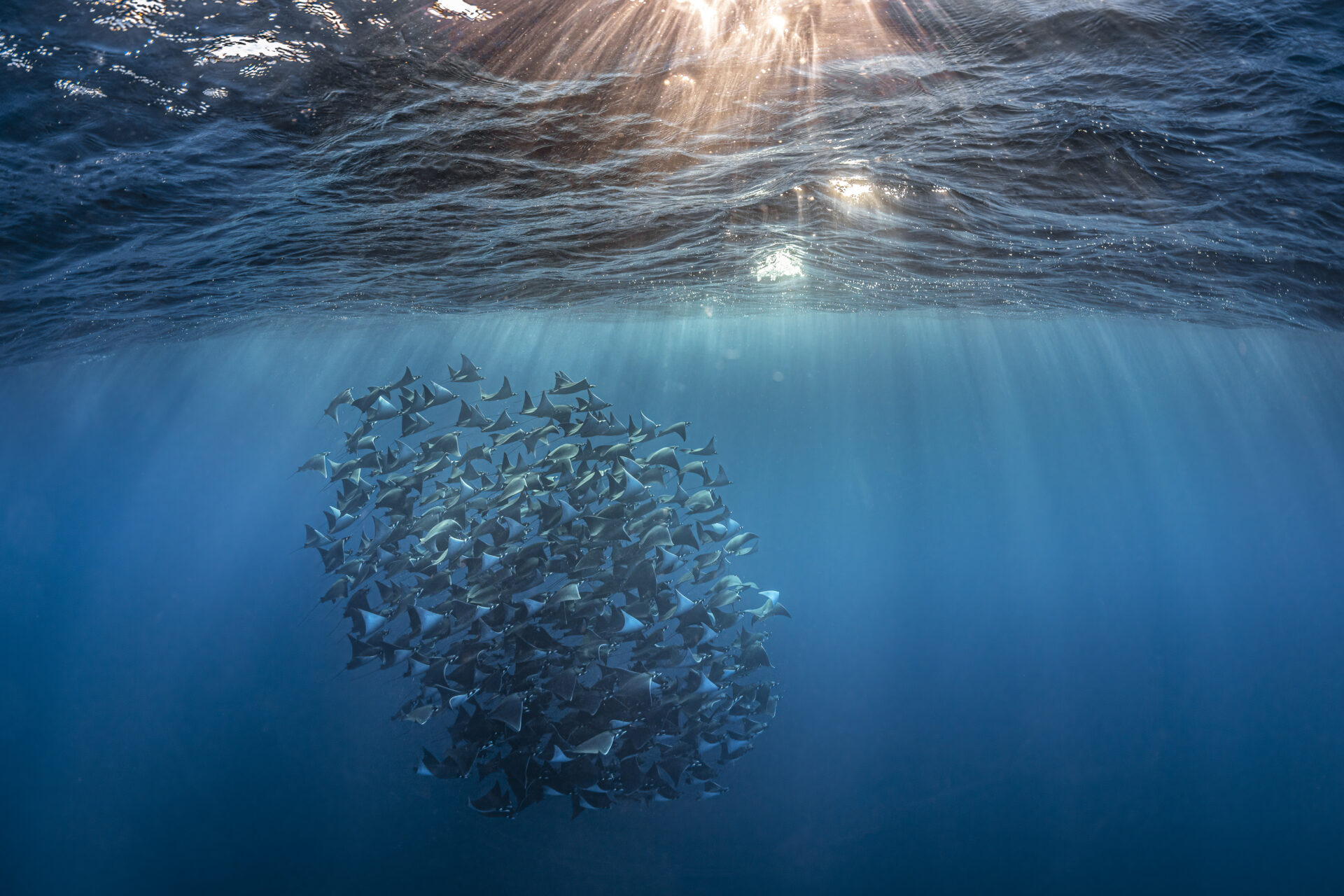

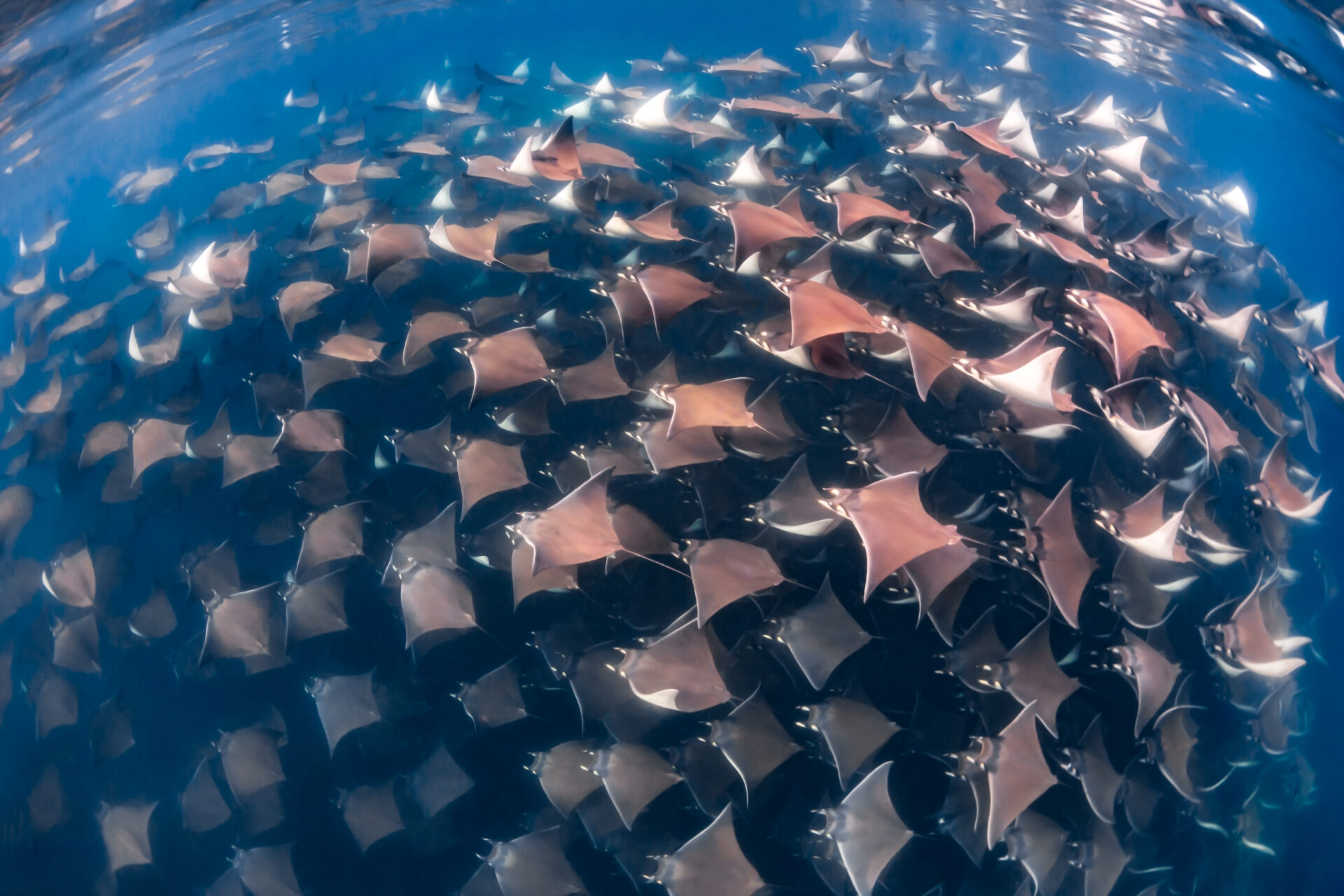
Anthropocentrists often argue that humans are the only species capable of cooperating in large groups due to communication, shared beliefs, and culture. But the first time I witnessed a group of 10,000 mobulas moving in formation, exhibiting distinct yet cohesive behaviours, I realised how little we truly understand about the world.
It is a phrase belonging to an Italian scientist known for his study of these marvellous animals that I will never forget. “I was part of the world, and I couldn’t see the end of it.”
There is little else more hypnotic than floating on the surface of the ocean, observing the behaviours of mobula rays below; watching them move or or simply observing how light bounces off their thousands of backs like the bottom of a shimmering pool. In that silence, it’s an experience that becomes a portal back to our most primal state: animals belonging to a shared planet.
It’s funny how everything else disappears. Emails, deadlines, reels, TikTok, that call you need to make, that ‘important’ meeting… Nothing exists but that which your eyes perceive in this moment. I can try to explain it with words, but they will never do it justice. Swimming among them or above them, it is simply transformational. It’s something healing.
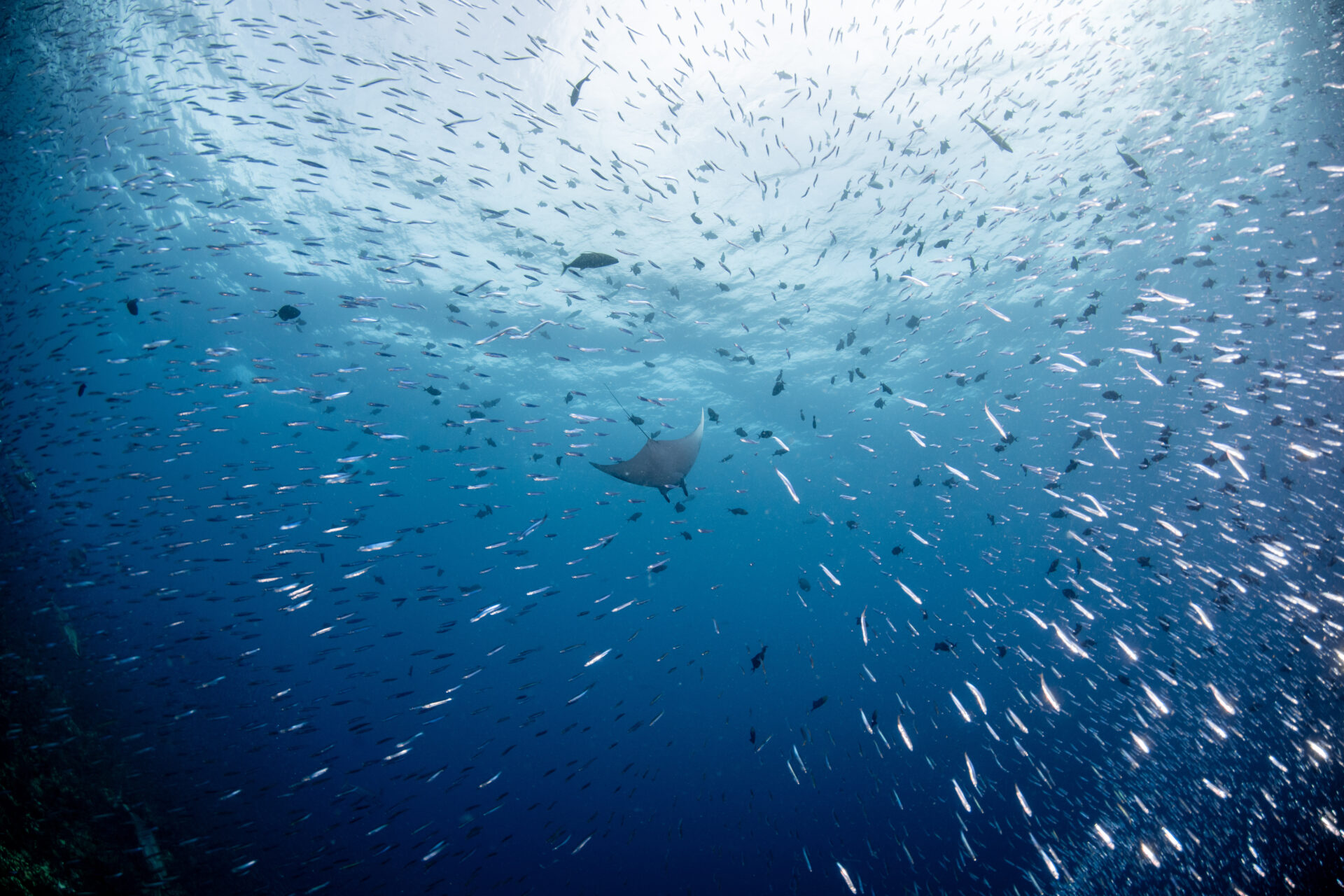
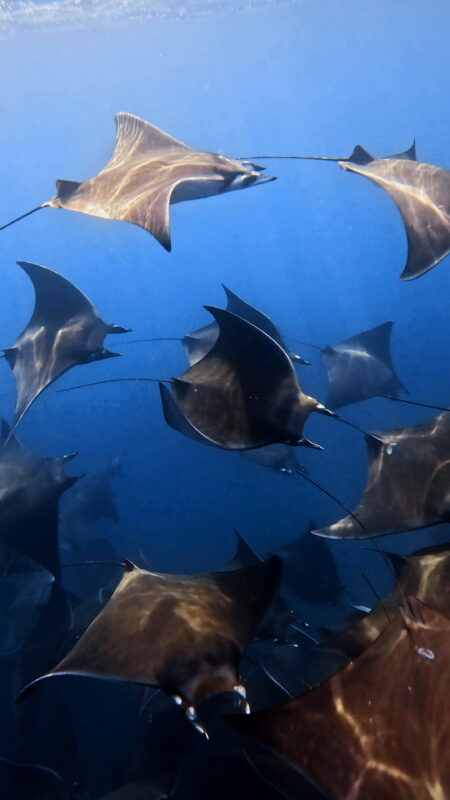
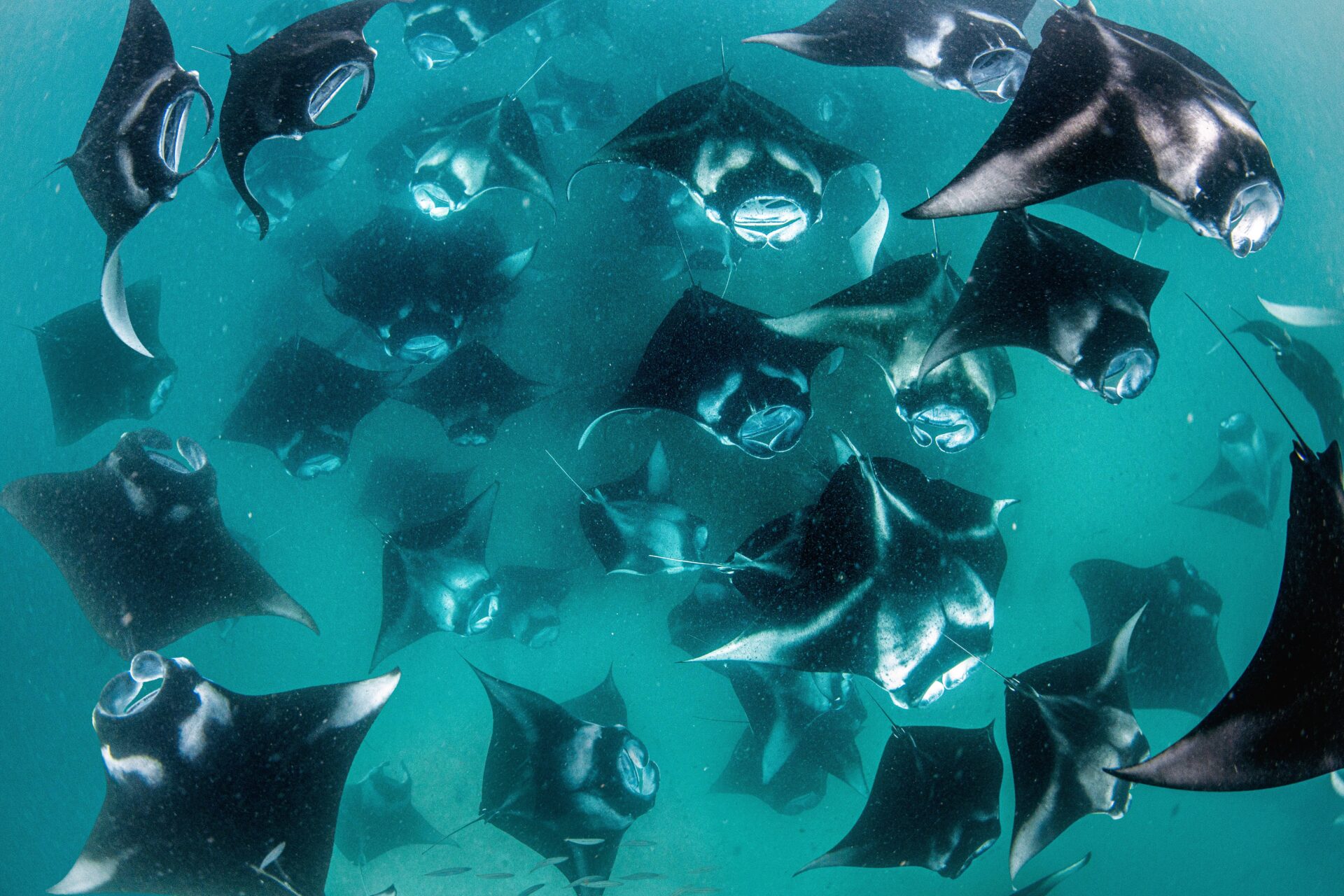
I’ve spent hundreds of hours surrounded by mobulas, observing and analyzing them during their migration months in the Gulf of California or the Sea of Cortez. When people ask me the best time to swim with them, I rely on my own empirical experience, which has no more scientific backing than my observations.
We know the largest groups are typically found in La Ventana (south of La Paz) from April to July – the species’ reproductive season. During this time, mobulas gather in massive groups, and if you’re lucky, you might witness their so-called vortex mating displays – giant tornados of mobulas during which groups of three or four individuals dive and surface in rotation. It’s a spectacle reminiscent of a teenager-filled nightclub. In my experience, the best time to observe larger groups is between late May and late June.
Just keep an eye on the moon. Planning your trip during a full moon could be a recipe for disappointment. With the moon full and bright, mobulas will avoid daytime activity and choose to become active in the night light. If you do manage to find a group, they’re likely diving so deep that they’re almost impossible to spot from the surface.
It’s at this point you may be wondering, well why not simply grab a tank and dive down to see them? It’s here that I will remind you that Mobula munkiana are prey, not predator. It is therefore a cautious, often skittish, species and one highly sensitive to noise. Within seconds of sensing your presence, they would be gone. Likewise would they vanish if you attempted to freedive with them.
One of the reasons mobulas move in groups is for protection against predators like orcas and sharks. Acting like predators ourselves would yield the same result: their escape. Worse yet, it could interfere with their ability to reproduce – the very reason they are gathered in this specific part of the Gulf of California.
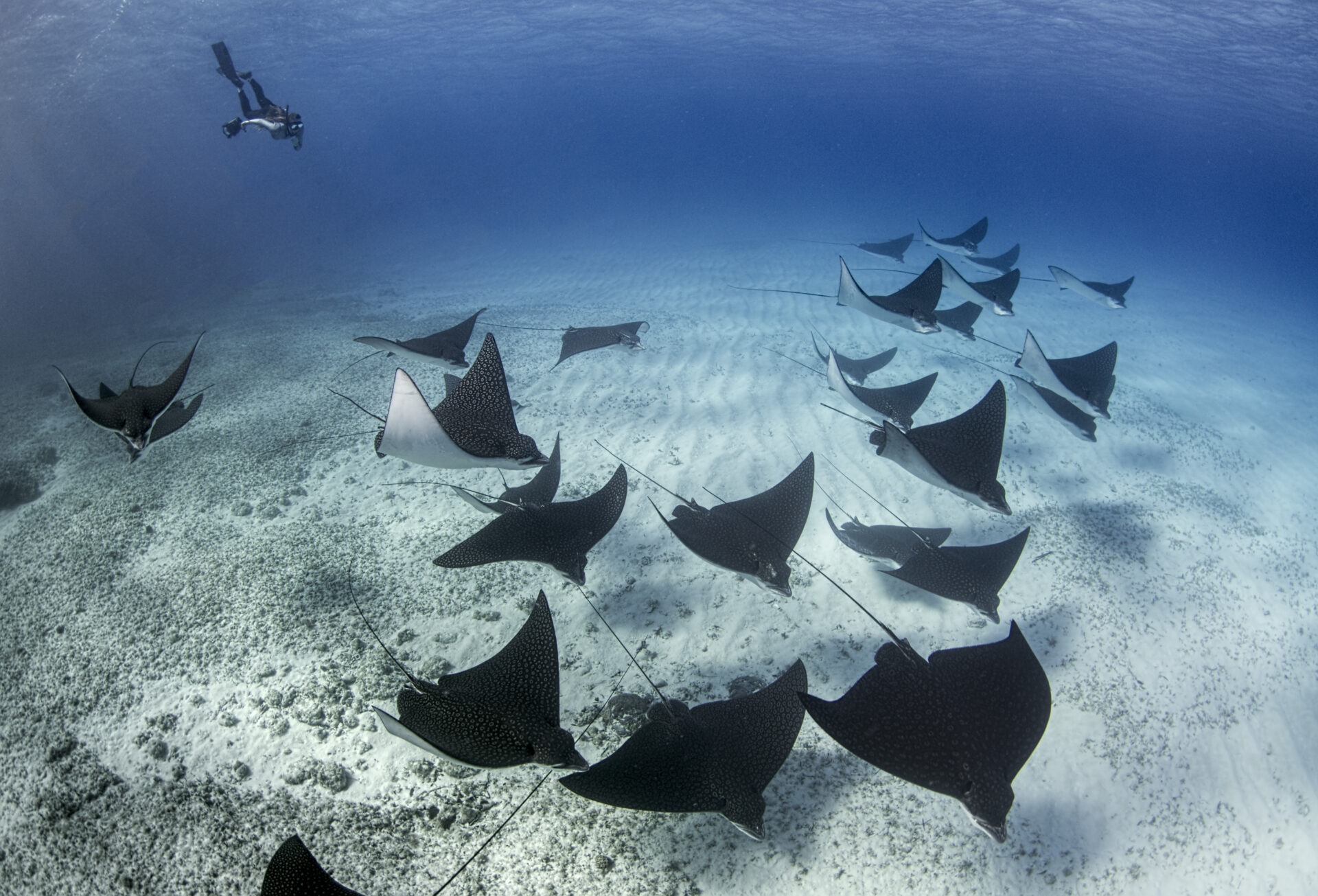
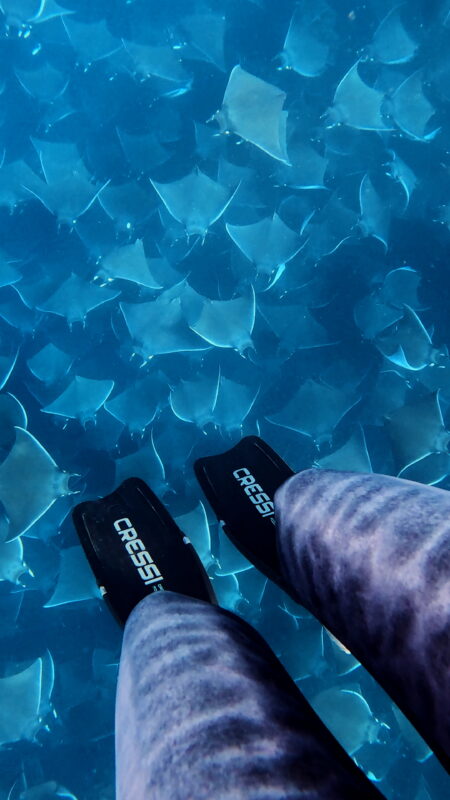
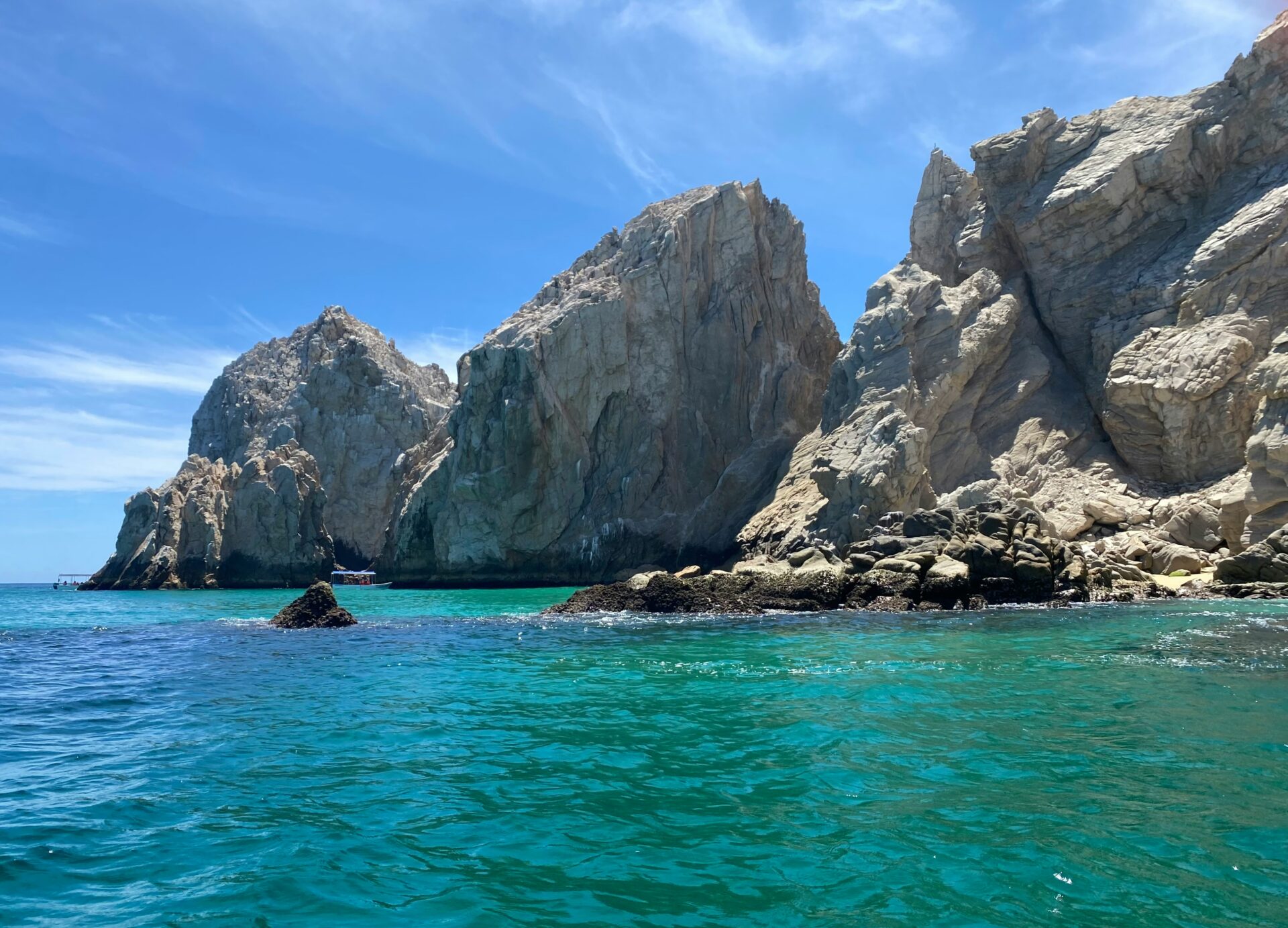
Swimming with mobulas is much more than an encounter with marine life; it is a connection to our essence. It reminds us that millions of years ago, we were also marine animals. It reconnects us to a world we often neglect while immersed in screens. Their beauty and mystery astound us but also reminds us of our responsibility as observers. Respecting their habitat means learning to coexist, letting go of our instinct to dominate. And that’s what this experience is all about -making peace with the notion that the ocean is not ours to own.
Every leap and formation in the water awakens us from the illusion that we understand the world we inhabit. Watching them in silence from the surface is a profound reminder of our connection to nature and our duty to protect it. These small, unassuming beings remind us that the ocean is not just a home to be cared for but a place where the soul finds its freedom.
Swimming with them, even for a moment, allows us to become part of a world where, for an instant, we are eternal.
Oceanographic Magazine has partnered with its friends at Finisterre to launch a brand new series of live-audience discussions, bringing critical ocean stories and storytelling to life in branded stores across the UK – and this is your chance to participate.
Called OCEAN TALKS, the series of events will kick off this September 25th at the Finisterre flagship store in London, England where experts in natural history storytelling and ocean conservation will be tackling some of the most pressing issues in the marine environment today.
Rays of Hope: What are we doing to protect our ocean’s gentlest giants will harness the expertise, experience, and insight of some of the ocean’s keenest storytellers and most passionate conservationists to celebrate manta and devil rays alongside the entire cast of charismatic mobulids and elasmobranchs, the new species we are still discovering even today, and the steps we all need to be taking to ensure their protection.
Printed editions
Current issue
Back issues
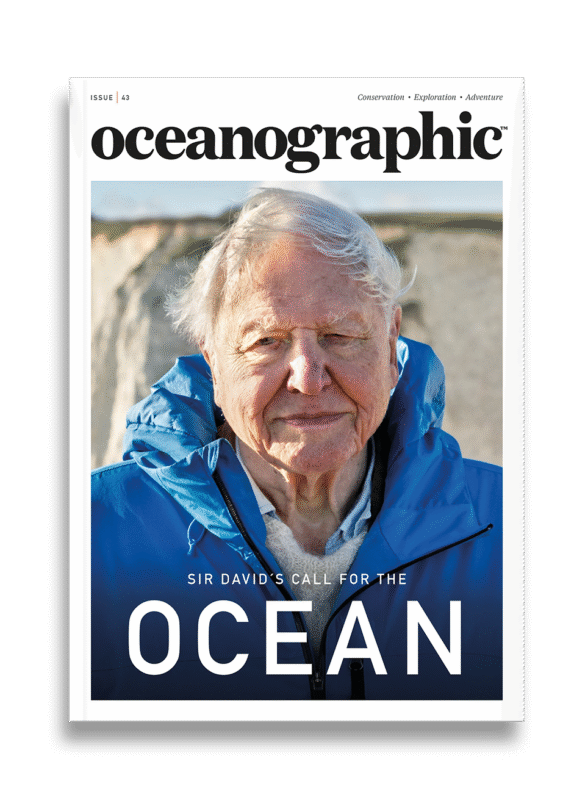
Back Issues
Issue 43 Sir David Attenborough’s ‘Ocean’

Back Issues
Issue 41 Holdfast to the canopy
Enjoy so much more from Oceanographic Magazine by becoming a subscriber.
A range of subscription options are available.
